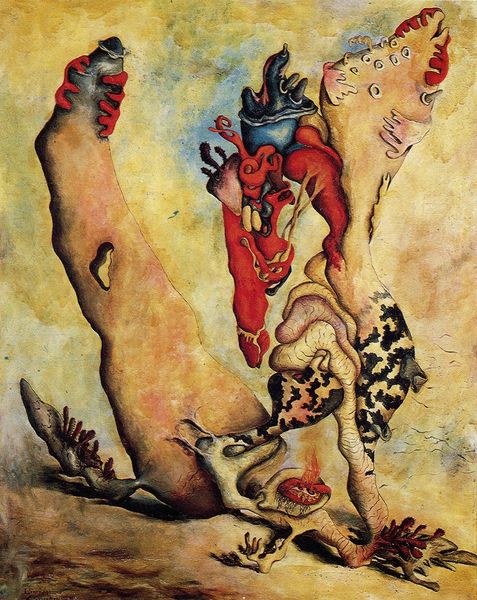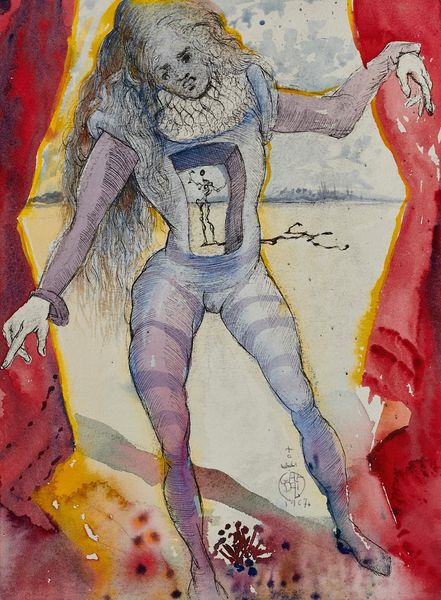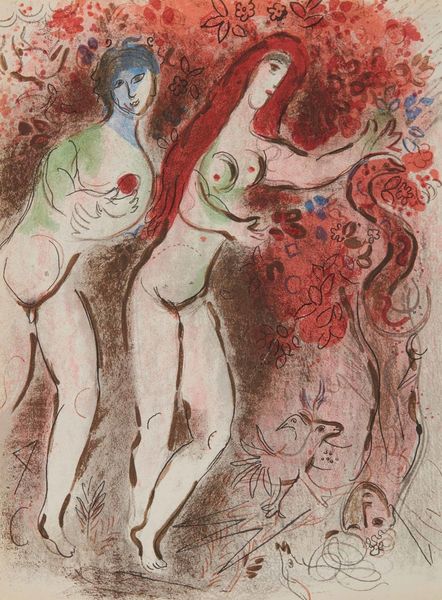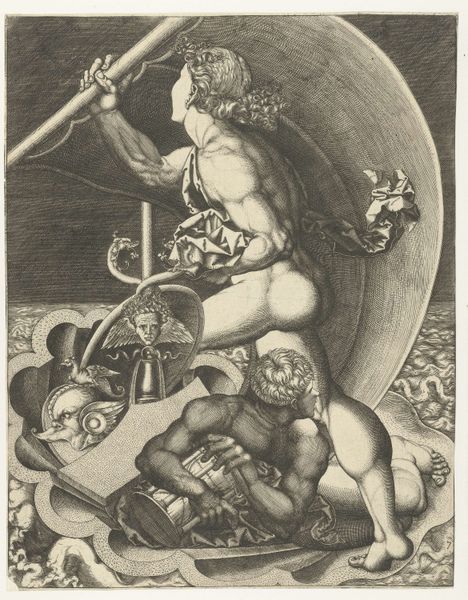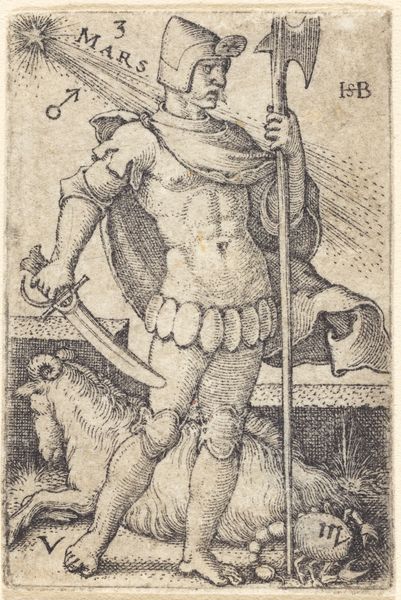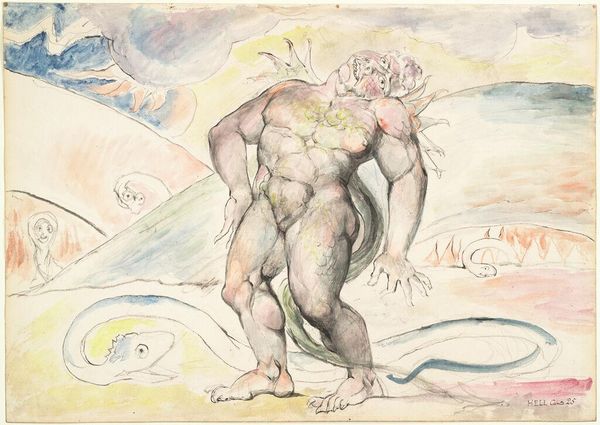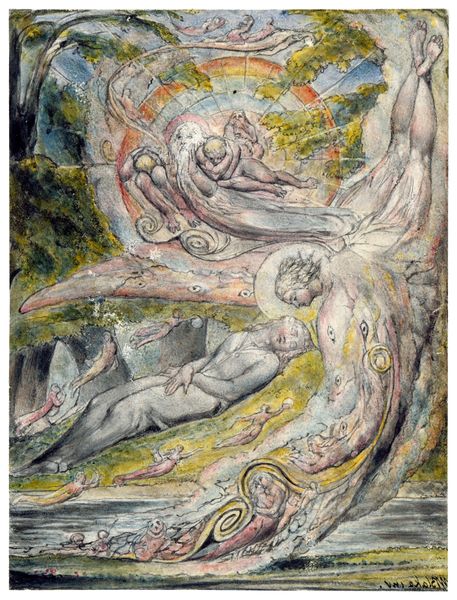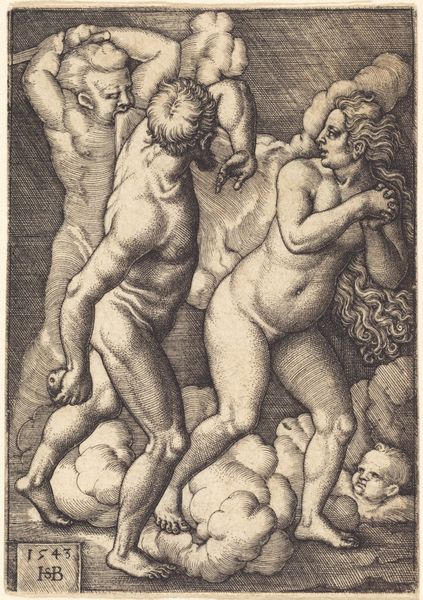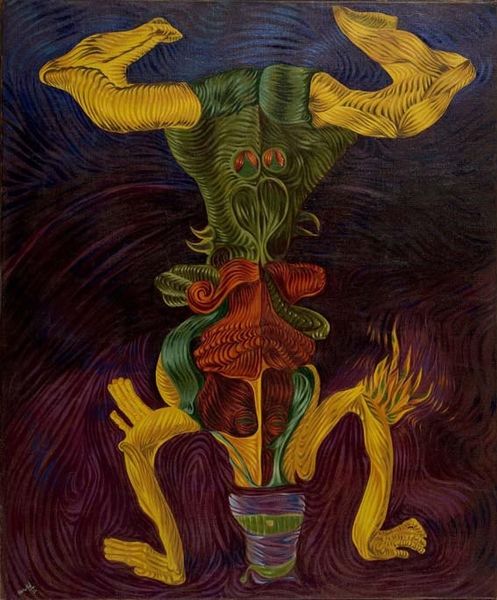
painting, oil-paint
#
portrait
#
abstract painting
#
painting
#
oil-paint
#
figuration
#
surrealism
Dimensions: overall: 91.6 x 71.3 cm (36 1/16 x 28 1/16 in.) framed: 101.6 x 81.3 x 8.7 cm (40 x 32 x 3 7/16 in.)
Copyright: National Gallery of Art: CC0 1.0
Curator: This is an untitled oil painting created by Mark Rothko between 1940 and 1941. It's a compelling, early example of his movement toward abstraction. What strikes you immediately? Editor: A feeling of unsettling vulnerability. The figure's distorted form and multiple perspectives evoke a sense of fragmented identity, perhaps even a psychic deconstruction laid bare. It reminds me of the figures in Picasso's Guernica, but rendered with softer edges. Curator: Interestingly, Rothko's process at this time was heavily influenced by surrealist automatism and mythological subject matter. He was striving to unlock unconscious expression by experimenting with the medium. Consider how the application of the paint – thin washes layered one over the other – allows for this translucency. It's key to the ghostly, ethereal effect. Editor: Precisely. We also have to consider Rothko's Jewish identity and the socio-political landscape of the early 1940s. There’s an anxiety present, a fragility that can be interpreted as a response to the rise of fascism and the persecution he and so many others were facing. That interior state definitely impacts how he handles materials to render the figure almost undone. Curator: That reading aligns well with the broader context. The fact that this is "Untitled" also plays into this – denying the viewer a direct entry point, suggesting the experience itself, the application of material, holds precedence over prescribed meaning. It really puts into question art production’s engagement with craft and historical reflection, which are always present regardless if artists choose to unveil or hide it. Editor: And how Rothko situates the body—pulled apart, layered with color, and positioned both as vulnerable and confronting. It asks us to consider the fractured self within a world actively fragmenting identities along racial and ethnic lines. It really encourages us to think about how even early experiments such as this can echo through the social history and contemporary landscape that Rothko engaged in and we as viewers stand within today. Curator: I appreciate you illuminating the intersections between Rothko’s identity, the historical milieu, and his artistic method. It's vital to look beyond the surface and understand the work’s embedded anxieties. Editor: Agreed, understanding this work and others like it is important because of the ability to see and re-see moments that impacted historical discourse. From our vantage, we gain insight through that reflection.
Comments
No comments
Be the first to comment and join the conversation on the ultimate creative platform.

